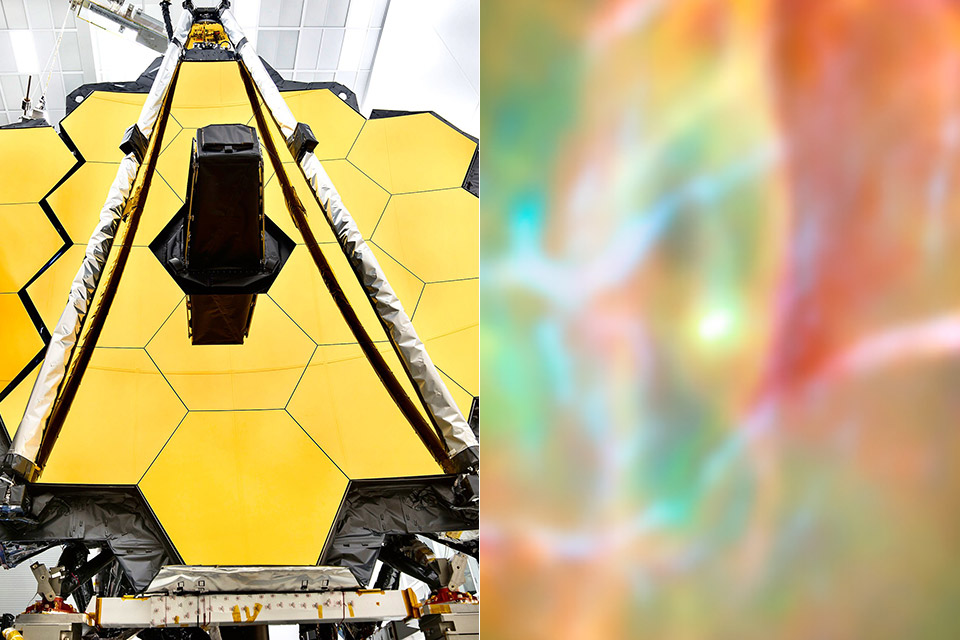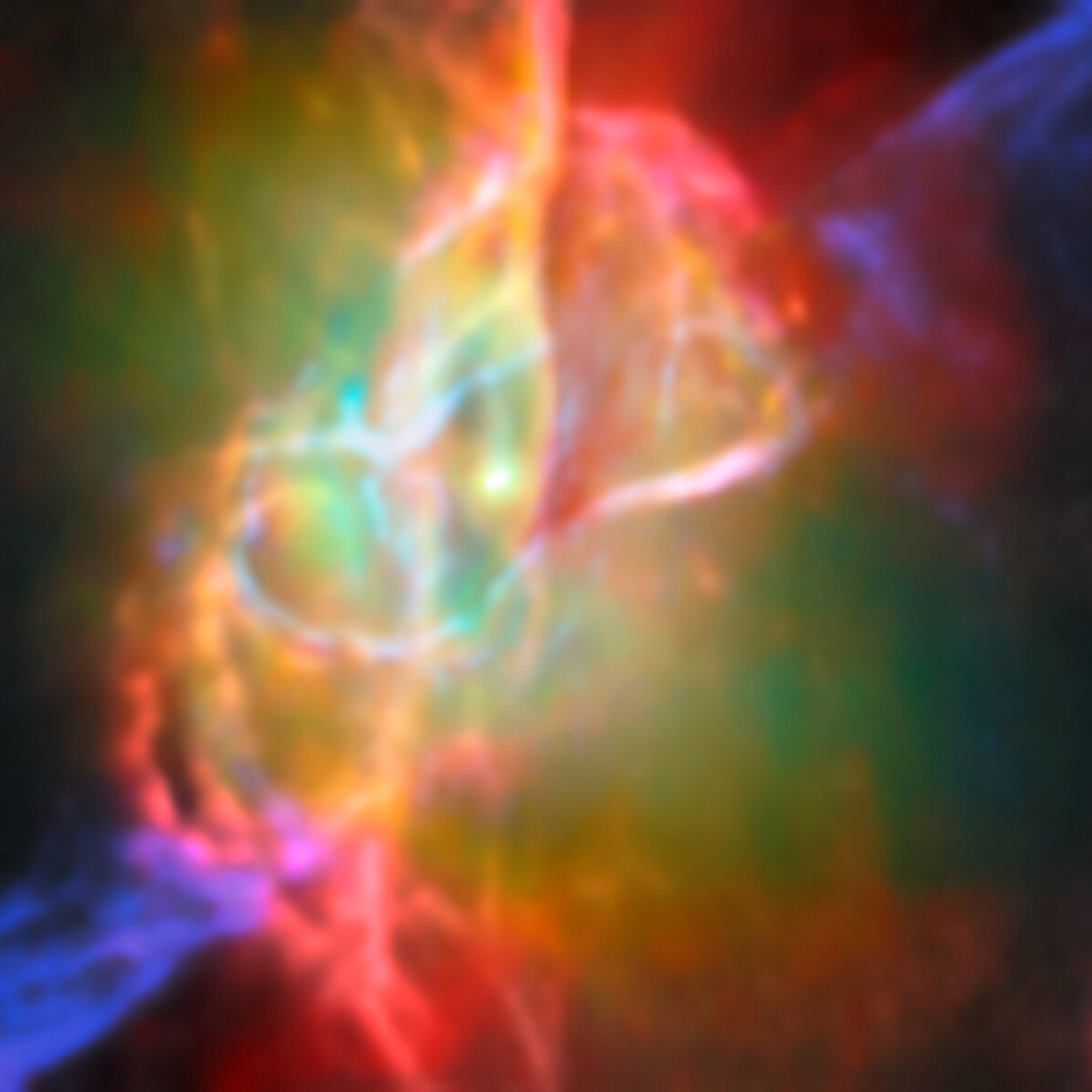
A star is at the heart of the Butterfly Nebula, 3,400 light-years away in Scorpius, hidden behind a curtain of dust so thick it was invisible. The James Webb Space Telescope’s Mid-InfraRed Instrument (MIRI) has lifted that curtain and for the first time we see the nebula’s core. The image along with data from the Atacama Large Millimeter/submillimeter Array (ALMA) is changing our understanding of planetary nebulae.

Stars like our Sun, with masses between 0.8 and 8 times its size, don’t go out quietly. Near the end of their lives they shed their outer layers, casting off gas and dust that form glowing clouds called planetary nebulae. These structures last only about 20,000 years—a blink in cosmic terms. The Butterfly Nebula, or NGC 6302, is one of the most beautiful, its two lobes stretching out like wings. A dense, donut-shaped ring of dusty gas, called a torus, forms its “body,” channeling the star’s outflow into this insect-like shape. Hubble’s earlier images in optical and near-infrared light made the nebula’s butterfly form iconic, but couldn’t see through the dust to the star at its center.
Sale

LEGO Creator 3 in 1 Space Astronaut Toy, Building Set Transforms from Astronaut Figure to Space Dog to…
- 3 LEGO space toys in 1 box – Boys and girls ages 9 and up who love space can build and rebuild 3 different sets using the same set of bricks with…
- Endless space play possibilities – Kids can play out daring stories among the stars with 3 different space playsets: an astronaut figure, a space…
- Posable space figures – The astronaut toy has posable legs, feet, arms and fingers, and the space dog has a posable tail and legs so kids can choose…
MIRI operates in the mid-infrared and can see through the dust that hides the nebula’s heart from optical telescopes like Hubble. The central star, blazing at 220,000 Kelvin—one of the hottest known in any planetary nebula—finally comes into view. Surrounded by a glowing dust cloud, this star’s intense heat and radiation is sculpting the nebula’s structure. Previous searches for this star came up empty; older telescopes didn’t have the infrared sensitivity and resolution to find it. Now we see not just the star but the torus around it, and crystalline silicates like quartz and dust grains grown unusually large, about a millionth of a meter across. These grains suggest a long history of growth in the nebula’s dense core.

Beyond the torus things get even more fascinating. Webb’s integral field unit mode, which combines imaging and spectroscopy, shows the nebula at multiple wavelengths at once. This reveals nearly 200 spectral lines—each a signature of different atoms and molecules. Iron and nickel are tracing out two jets shooting out from the star, carving channels through the surrounding gas. Closer to the star high-energy ions are dominant, farther out lower energy ones are, creating a layered, almost nested structure.
One surprise: polycyclic aromatic hydrocarbons (PAHs). These carbon-based molecules, found in smoke or exhaust on Earth, were seen in an oxygen-rich nebula like NGC 6302 for the first time. They think they form when a “bubble” of stellar wind hits the surrounding gas, a clue to how they form in these environments. This could change our understanding of how complex chemistry works in the death throes of stars.
The ALMA collaboration adds another layer. While Webb’s infrared shows the hot core, ALMA’s radio maps the cooler gas and dust, and together they show a nebula that’s not just pretty but dynamic, with jets, winds and chemistry shaping its form. The research, led by Mikako Matsuura and published in the Monthly Notices of the Royal Astronomical Society, is a big step forward in studying planetary nebulae. Webb’s view of NGC 6302 isn’t just a snapshot – it’s a window into a star’s final legacy, a butterfly born from cosmic fire.
[Source]